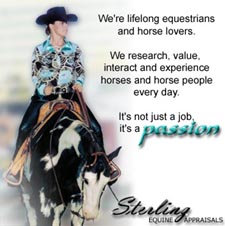
ScienceDaily (Sep. 12, 2011) — An endangered species of horse -- known as Przewalski's horse -- is much more distantly related to the domestic horse than researchers had previously hypothesized, reports a team of investigators led by Kateryna Makova, a Penn State University associate professor of biology.
The scientists tested the portion of the genome passed exclusively from mother to offspring -- the mitochondrial DNA -- of four Przewalski's horse lineages and compared the data to DNA from the domestic horse (Equus caballus). They concluded that, although previous scientists had assumed that Przewalski's horse and the domestic horse had diverged around the time that horses were domesticated -- about 6,000 to 10,000 years ago -- the real time of the two species' divergence from one another is much more ancient. The data gleaned from the study also suggest that present-day Przewalski's horses have a much more diverse gene pool than previously hypothesized. The new study's findings could be used to inform conservation efforts to save the endangered horse species, of which only 2,000 individuals remain in parts of China and Mongolia, and in wildlife reserves in California and the Ukraine. The paper will be published in the journal Genome Biology and Evolution.
Przewalski's horse -- a stocky, short-maned species named after a Russian explorer who first encountered the animal in the wild -- became endangered during the middle of the last century when the species experienced a population bottleneck -- an evolutionary event in which many or most members of a population or a species die. "Sadly, this bottleneck was the result of human activity," Makova explained. "Przewalski's horses were hunted down for food, and their natural habitat, the steppes, were converted into farm land so the horses basically had nowhere to live and breed. By the late 1950s, only 12 individual horses remained." Makova said that because conservationists have made noble efforts to rescue this dwindling population, the present-day population has grown to 2,000.
In a study that had never been attempted by previous scientists, Makova and her team analyzed the complete mitochondrial genomes from four female lineages that currently survive within the Przewalski's horse population. They first determined that the mitochondrial genomes of two of the maternal lineages actually were identical, thus narrowing the genetic pool to three maternal lineages. Then, they tested their data against the prevailing hypotheses about the genetic history of Przewalski's horse. According to one hypothesis, Przewalski's horse evolved first, with the domestic horse later evolving as a derivative species. According to another hypothesis, the genetic story is the opposite: the direct ancestors of the domestic horse were first on the evolutionary scene, with Przewalski's horse evolving and forming a new species later. According to the former hypothesis, the divergence of the two species had to have occurred around the time of horse domestication -- about 6,000 to 10,000 years ago.
"My team discovered that neither scenario is likely," Makova said. "Instead, our data suggest that Przewalski's horse and the domestic horse are much more distantly related. In fact, they probably shared a common ancestor as far back as 160,000 years ago, long before horse domestication. This is a major shift in our understanding of the history of Przewalski's horse." To bolster their conclusions, the team also sequenced a portion of the Przewalski's horse's nuclear DNA -- the part of the genome passed to offspring from parents of both sexes. In addition, they sequenced a portion of the genome of a third species known as the Somali wild ass, the wild progenitor of donkeys. Makova explained that adding this information allowed her team to "calibrate the molecular clock of horse evolution," thus narrowing the window of time for sub-species divergence and confirming her team's suspicions that horse domestication and the emergence of Przewalski's horse were two very distant and independent events.
Makova added that, although the two species diverged well over 100,000 years ago, they have interbred periodically since then. "Also fortunate is the fact that conservationists in the second half of the 20th century realized how grave the situation was for the Przewalski's horse. They not only began new breeding efforts and built wildlife reserves in California and the Ukraine, but they also made sure to avoid inbreeding among close relatives," Makova said. "For this reason, the present-day population has managed to remain healthy by retaining substantial genetic diversity."
Makova and her team hope that their findings will help guide future conservation efforts for the endangered horse species. "The idea is to gradually reintroduce Przewalski's horse into the wild," Makova said. "For example, now that we have a more thorough understanding of the different maternal lineages, we can diversify the animal's gene pool even more. This will be a way to ensure that members of wild species suffer as few recessive diseases as possible and have the best opportunity to flourish once they are introduced into the appropriate habitat."
In addition, the researchers hope to further horse-evolution studies by sequencing the genomes of additional breeds of domestic horses, and, eventually, by sequencing the complete genome of Przewalski's horse. "More genetic data means a more precise evolutionary clock," Makova explained. "The more we know, the more we can adjust the time frame for when Przewalski's horse and other horses diverged from their common ancestor." Makova added that she and her team also would like to identify the genes that code for the physical differences between Przewalski's horse and the domestic horse. "It's always been a curious question why Przewalski's horse is so much shorter and stockier in stature than the domestic horse, and also why Przewalski's horse has a shorter, thicker mane," Makova said. "A deeper genetic analysis and subsequent experiments could reveal the very genes that determine differences in appearance between the two species."
This research is supported by the National Science Foundation and the National Institutes of Health.



